
Hobart to Sydney Deliveries and Carnage
The Rolex Sydney Hobart is known around the world as being a race that can serve up extreme conditions at a moment’s notice. While many sailing fans will remember the infamous 1998 race that resulted in both boats and lives being lost at sea, few will ever hear of the carnage that occurs year in and year out on deliveries back up to mainland Australia. A few days after the 75th edition of the race concluded and the bulk of the fleet began making their way back to Sydney, a large low-pressure system swept over Tasmania and South Australia, creating nuclear wind conditions in the region.
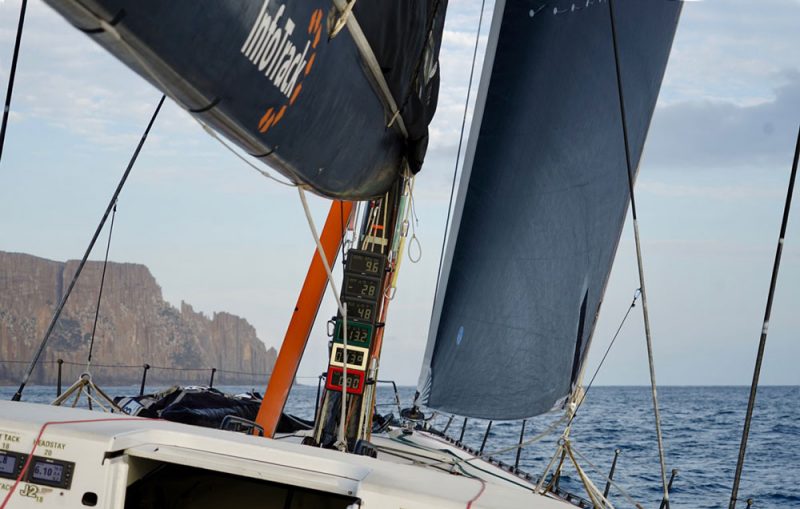
Early on the morning of January 5, three boats ran into major problems and issued mayday calls. First and most notably, the Ker 40 Showtime suffered a keel failure. The keel strut failed at its weld and sent the boat into an immediate capsize. One of the seven crew on board heroically dived below to retrieve the liferaft. Once in the raft, the crew managed to activate their EPIRB and a Personal Locator Beacon (PLB). They were fortunately rescued three hours later around 5:30 a.m. All survived.
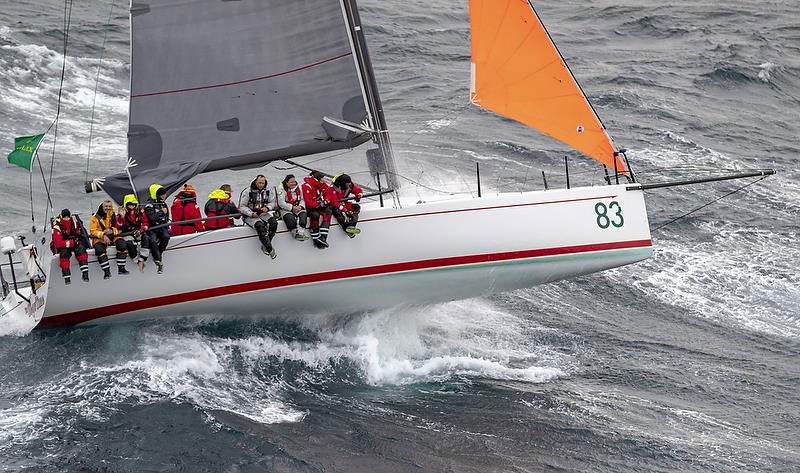
An important takeaway from this story is that the new keel was designed and constructed by a different naval architect than the yacht’s designer, Jason Ker, as his office was justifiably quick to point out in a press release that went far and wide to the yachting world. Of particular interest to this writer, the keel was of a very similar construction method to the one that nearly killed me during a delivery back to San Francisco 10 years ago on the Aussie-built Warrior’s Wish.
At the same time that the crew on Showtime were getting into a raft and awaiting rescue, the crew of the smallest boat entered in the 75th Rolex Sydney Hobart, the 30-ft sloop Gunrunner, was pulling their rig back on board after being dismasted by a 50-knot gust just 5 miles off the coast. They managed to get the boat back into Eden (in New South Wales), a popular port of refuge for crews who withdraw from the race before entering Bass Strait, or those on a delivery who have just crossed the Strait and need to lick their wounds. Unfortunately for the crew of Gunrunner, they were kicked out of Eden due to the whole place being evacuated due to the bush fires!
Just minutes after Gunrunner’s 3 a.m. dismasting, the Murray 42 Secret Men’s Business issued a call to report two injuries on board, presumably from the same strong cell of weather that had affected Gunrunner and Showtime.
Video by Ronnie Simpson
This writer was fortunate enough to score a ride back on the 100-ft super-maxi Infotrack, which had ironically suffered a keel failure of its own, back in the day when it was known as Rambler 100 and competing in the Fastnet Race. With a crew of 18 and a good weather window that included a 10- to 20-knot beat before a transition zone and a 10- to 20-knot run, we had no dramas at all, aside from the bush fires that are presently impacting much of the east coast of Australia. As can be seen in photo and video, the smoke in the Bass Strait was quite thick, impacting our visibility and creating many sore throats among the crew.
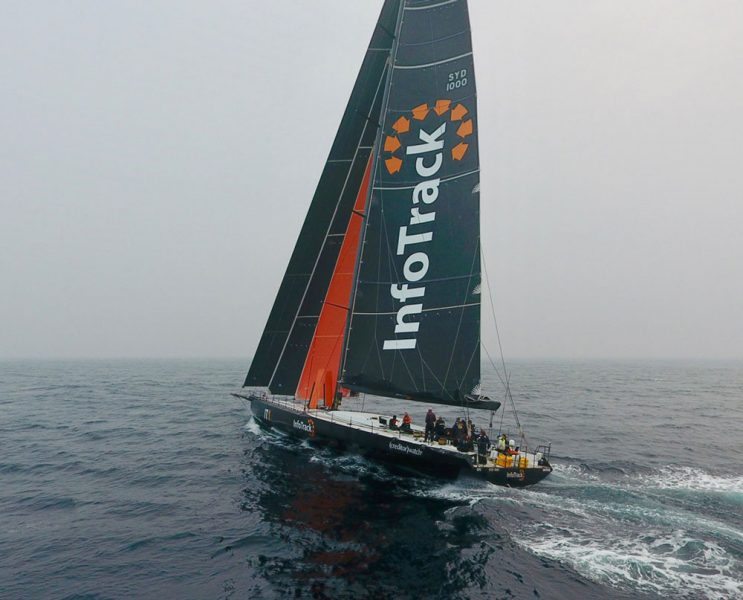
Newport to Ensenada Race Seminars
The road to participation in the 73rd Newport to Ensenada International Yacht Race (N2E) will begin for many with attending a seminar at yacht clubs throughout Southern California.
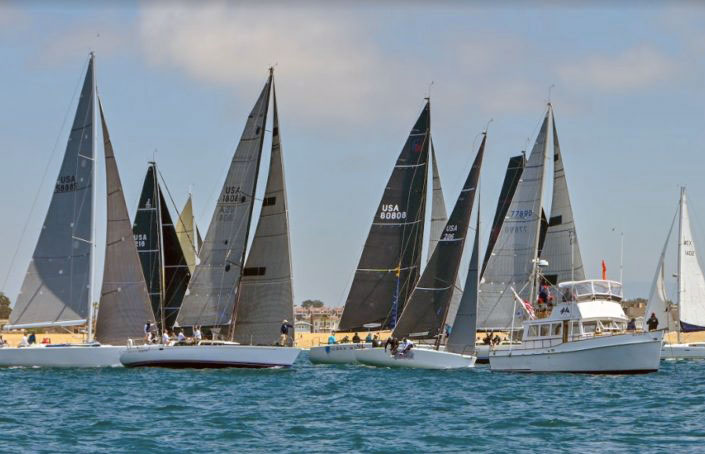
Organized and presented by the race managers at Newport Ocean Sailing Association (NOSA), these seminars are intended for new N2E racers and to refresh the memories of race veterans on preparation subjects, such as:
- How to navigate the registration process, such as getting a sail number and a rating certificate.
- Ensuring your compliance with the Notice of Race and the relevant safety standards.
- Preparing for entering and leaving Mexico with permits and other formalities.
- Organizing hotels for your team and dockage for your boats.
And important race-related topics such as:
- Organizing the crew and developing a coherent and successful race plan.
- Specific racing strategy and tactical tips for this race.
- Preparation and storage of equipment on the boat.
- Navigation tips.
- Sail trim guidelines.
- Sailing at night and watch-system options.
- Weather forecast sources and analysis tips.
Kick-Off Luncheon
The series will kick off this week, exactly 100 days before the start of the N2E, with a special presentation by noted offshore yachtsman and America’s Cup veteran John Sangmeister. At Newport Harbor Yacht Club’s Yachtsmen’s Luncheon on Wednesday, January 15, Sangmeister will discuss the significance of this race in attracting all levels of sailors — new and experienced — and how important the race is in keeping Southern California’s offshore sailing scene competitive, fun and safe. This includes course options to finish in Dana Point, San Diego or Ensenada; new class formats introduced to make the race more competitive and fair; and the many fun shoreside activities prior to the start and after the finish.
John will also talk about how the organizers at NOSA have been updating this venerable race with new features to broaden its wide appeal as the most popular international yacht race in North America. The cost for the lunchtime event is $19/person. Make reservations by contacting [email protected]. Sign up now, as space is limited.
Seminar Schedule
- January 23: Pierpont Bay YC, Ventura
- February 13: Bahia Corinthian YC, Corona del Mar
- February 20: Long Beach YC, Long Beach
- February 27: Silver Gate YC, San Diego
- March 26: Del Rey YC, Marina del Rey
- TBD: Dana Point YC, Dana Point
All of these start at 7 p.m., with a social hour at 6 p.m. Food and beverages will be available for purchase. Seminar instructors include Len Bose, Bruce Cooper and Bill Gibbs. Sign-up details for each will be available soon at www.nosa.org/seminars.
“The presenters are experienced and have a wealth of knowledge to share,” said Bill Gibbs, commodore of NOSA. “We hope you take advantage of this by attending one of these seminars. What you learn will help not only improve your results but help to let you better relax and enjoy participating in this great race.”
The race itself will sail on April 24-28. Find more info about N2E at www.nosa.org. The direct link to registration for the race is here.
Discount on Side-Power Thrusters at KKMI
Reminder About Tomorrow’s Sausalito City Council Meeting
Latitude Nation — Just a reminder that tomorrow night at 6 p.m., Sausalito’s City Council and Planning Commission will hold a special joint meeting to discuss land use and growth management, community design and cultural preservation. In plain speak, changes are being proposed to the zoning for Sausalito’s Marinship, a unique swath of working waterfront.
We strongly urge advocates of Marinship to attend tomorrow’s meeting — which will be held at the IDESST Sausalito Portuguese Cultural Center, 511 Caledonia Street — and voice their support for a working waterfront.
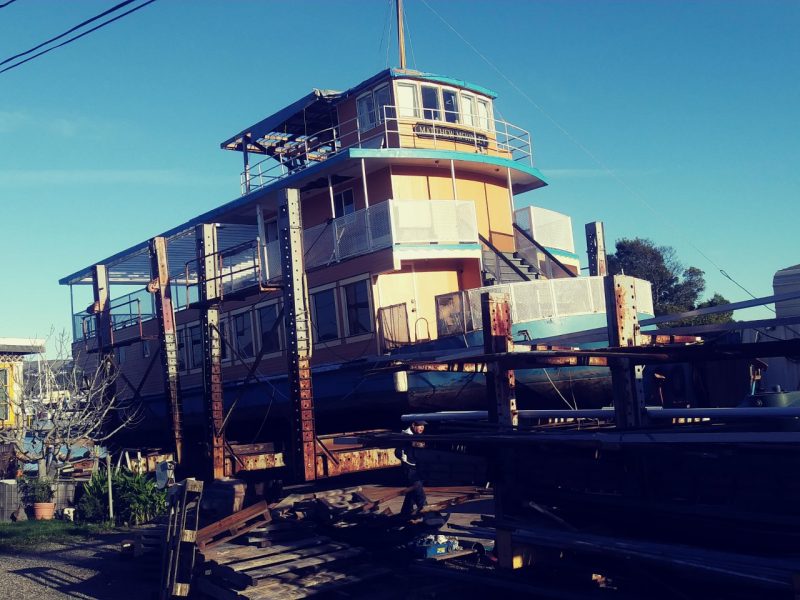
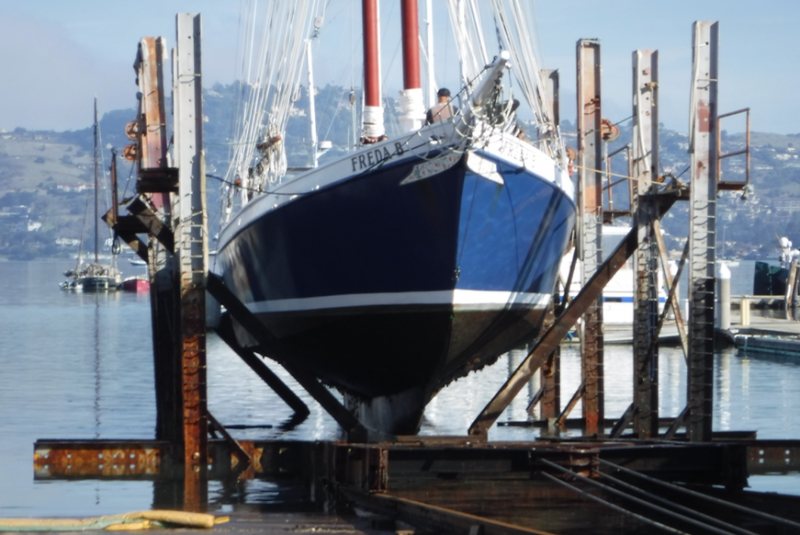
A copy of the Sausalito City Council agenda can be found here. We highly recommend checking out the Sausalito Working Waterfront web page, which can be found here.We will see you at the meeting tomorrow night.
The Rescue of ‘Green Dragon’ off Mexico, Part 2
Readers — On Friday, Jessica Lockfeld began recounting the rescue of the crew of Green Dragon 2. At the beginning of January, Jessica and her husband Jim were transiting from La Paz to Mazatlan aboard their Tartan 38 Hajime when they got a mayday call, and were told the Mexican Navy was on the way. “Jim and I exchanged worried glances,” Jessica wrote. “How in creation were we going to find a dark boat in the middle of this stormy night?”
The wind turned to the north, so we were fighting eight-foot seas with a five- to eight-second period, and everything inside the boat was shaken, not stirred. Nothing stayed put. However, we’ve been in worse seas, and we know our boat is tough. We were ‘walking’ the boat, standing behind the wheel and moving from foot to foot as the waves threw the boat from side to side, and holding on to whatever handholds we could use as we motored on, through lightning storms on either side of us, and looked anxiously for a boat. Any boat. Where the hell was the navy?
Very close to midnight on the 1st of the year, we approached our target. We could finally see her, still blessedly lit up with her running lights and masthead. We had been in intermittent radio contact with Green Dragon 2, who reported water still rising. They could not figure out where the water was coming in, and they were prepared to abandon ship.
The scene became surreal. We approached the boat and turned on our deck lights, to give us some idea of what was going on. We had been asking ourselves how we intended to do this, and we knew that in these seas we could not come alongside. There was too much movement, and if we banged into them we could both need rescue. We circled once, assessing the scene, the seas, the situation. The boat itself was low in the water, down at the nose, like a dejected donkey. They had the liferaft deployed behind the boat, and it was a terrifying thing. It is essentially an igloo, inflated rubber in the bottom and a fabric tent roof over it, and it made me want to puke just looking at it moving in the water. It was an orange and black bubble of hope and horror.
They weren’t in the liferaft yet. We circled again. We had agreed, by radio, that they would get into the liferaft and stay tethered to Green Dragon while moving away from the mother ship and hopefully toward us. This is more easily said than done. The waves and water were moving, foam-flecked; the wind was howling at 20 knots; and the lightning was occasionally illuminating everything like a flashbulb. Water birds were strafing something just beyond the reach of our brilliant deck lights, looking like restless and relentless ghosts as they flickered into shadow.
Jim was piloting the boat, while I was scampering around on deck trying to get good visuals and ready to catch a throw line. I was clipped onto the jacklines, in my lifevest, and swearing at how restrictive the bloody tether was. Somewhere around the fifth pass, they were in the liferaft and heading our way. I cannot imagine what courage it took to actually step into that thing. I’m not sure I could do it.
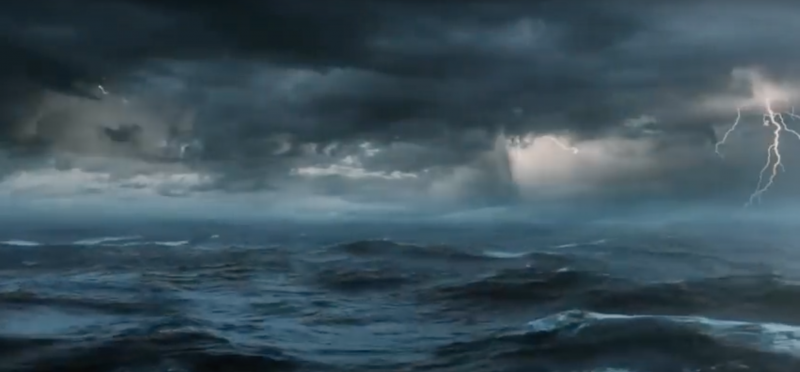
The first toss of the throw line fell short. We were moving past them, as we had to keep the engine moving to keep some way on in order to have a hope of piloting rather than drifting. We circled back around and tried again. I tried to catch the next toss, and damn near went overboard. Jim’s voice came from the cockpit. “Jessica! Don’t go off the boat!” We are not all very smart about coaching when stressed. I believe I swore a lot while ignoring him and getting the boat hook and trying to get the line. A third throw of the line went across the foredeck, and then we had some control.
Ever tried to winch someone from the water, with a multi-ton vessel on one side and your bare hands on the other? Cleating them off, pulling, swearing, cajoling the gods, till Gary Green, one of the owners of Green Dragon 2, got a hand up, couldn’t get around, got pulled off, pulled back on, and finally heaved himself heavily up the ladder, “Welcome aboard,” I said formally. He moved aside and his wife Rosalie handed up a bag, and then tried to get onto the ladder. Both hands made the grip, then slipped, and she fell back into the liferaft, and started to drift away.
“We’ll come for you!” yelled Jim, and we did, and he grabbed something, some sort of handle on the liferaft tent roof, which ripped away. Losing her. Losing the raft. It was a moment of quivering fear. “Line, throw a line,” he told me. There was one he had prepared at hand, the heavy nylon rode of our spare anchor.
I don’t have good aim. I tossed the line left-handed because of the lay and the situation, and because I don’t aim well on either side. It somehow landed where it needed to go, and she grabbed it. We started pulling it in. “I can’t hang on,” she said breathlessly. “Just hold on a moment,” I said, and she did. We got her alongside, and she reached, one-handed. I had elbowed her husband aside for space, for my agility, and I’d be damned if I’d see her slip again. I caught her wrist. Reached down, other hand grabbed a handful of jacket and life vest and hauled up. “I’m caught, my ankle is caught!” she cried. I decided that whatever in the life raft was holding onto her could just come with her.
I changed grip down to her trousers at the base of the spine and hauled. Thank heaven she had on foulies that wouldn’t rip. Jim abandoned his post to grab something, and we rolled her aboard, with some part of the sleeve of her jacket snared on the ladder pin. A fuss for a knife. A screech of metal as Hajime’s bow hit the aft end of the sinking vessel. Jim says he saw their dinghy engine, which had been clipped to the aft rail, flip up through the air as we pried it off with our prow like someone popping the cap off a bottle. He backed us off and took control of Hajime, I cut the sleeve to free her, and we spent a moment or two collecting ourselves back into the cockpit.
That was when the engine overheated. We turned it off and let the boat drift. It was almost peaceful, the wind pushing us away from catastrophe, nothing of urgency for the moment. Two dripping castaways on our deck.
We’ll bring you the final installment of the Rescue of the Green Dragon on Wednesday.
Sequoia Yacht Club Tackles Latitude 38 on Game Day
While it was ‘game day’ across the country, members of the Sequoia Yacht Club settled into a favorite weekend pastime — reading the most recent issue of Latitude 38.
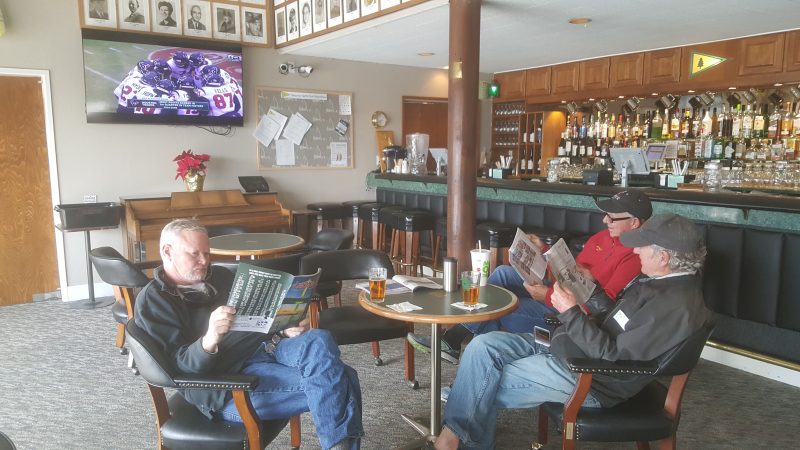
David Goeke, owner of the Santana 22 Rhapsody, thought this was worth pointing out. He noticed his fellow yacht club members had better things to do on weekends than watch football.
Sequoia YC is full of members who make this so. In our January issue, you’ll see SeqYC members Ana Bog and Peter Weigt, who won OYRA PHRO2 aboard their Pogo 36 Ferox, in our winners’ column. You can see in the Latitude 38 Calendar that SeqYC will host a North U Racing Tactics seminar on February 9, and they have two winter regattas underway: the Winter Series and Redwood Cup. The January issue also includes a story about Sherry Smith, who got her start sailing at Sequoia 12 years ago.
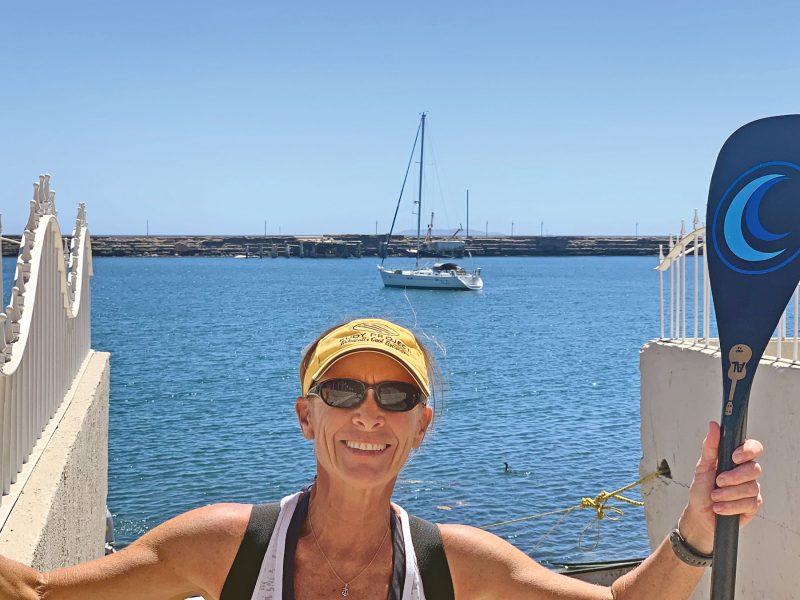
If you’re looking for a copy of Latitude 38, head over to the home of many South Bay sailors, Sequoia Yacht Club in Redwood City, or you can find one near you here. And we want to applaud the members of SqeYC for keeping their priorities straight!

